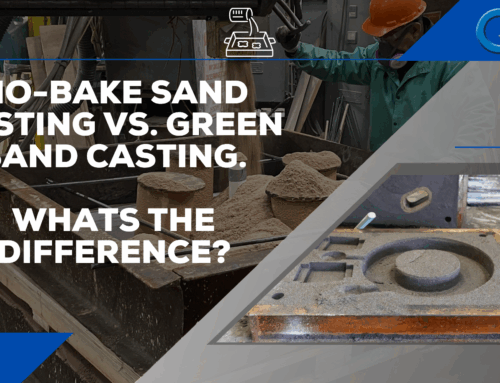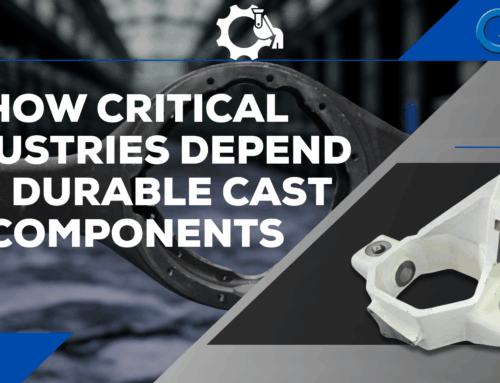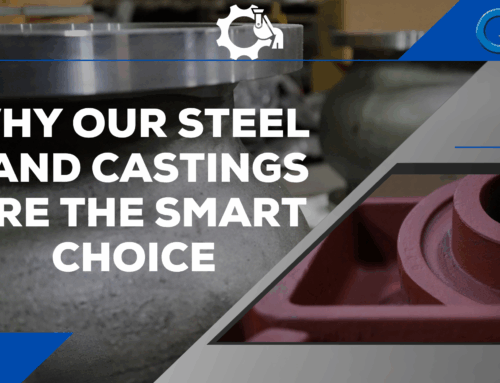Iron Cast Foundries: QCC-Shaping the Modern World
In the ever-evolving landscape of modern manufacturing, there’s a remarkable force at play – iron cast foundries. These centuries-old institutions are not only preserving the legacy of craftsmanship, but they are also shaping the world we live in today. From intricate machinery parts to architectural masterpieces, iron cast foundries play a vital role in our daily lives, often unnoticed.
With their expertise passed down through generations, these foundries combine traditional techniques with cutting-edge technology to create products of unparalleled quality and durability. The revival of iron cast foundries has not only sparked a renewed appreciation for craftsmanship but encompasses a sustainable approach to manufacturing, as they recycle scrap metal, reducing waste and carbon footprint.
From the mesmerizing patterns of molten iron to the painstaking precision of mold-making, the process of crafting iron castings is nothing short of an art form. Each piece is a testament to the skill and dedication of these foundries, who continue to push the boundaries of what is possible. Join us as we explore the captivating world of iron cast foundries and the significant impact they have on the modern world.
The Role of Iron Cast Foundries in the Modern World
Iron cast foundries have a rich history that dates back centuries. The origins of iron casting can be traced back to ancient civilizations such as the Egyptians and the Chinese. These early foundries utilized primitive techniques to create basic objects, paving the way for the development of more sophisticated methods.
During the Industrial Revolution, iron cast foundries experienced a boom in production as demand for cast iron products skyrocketed. Foundries became vital in the manufacturing of machinery, engines, and infrastructure. With advancements in technology, the process of iron casting became more efficient and precise, leading to the production of complex and intricate castings.
Today, iron cast foundries continue to honor their heritage while embracing modern advancements. The knowledge and techniques handed down through generations form the backbone of these foundries, ensuring the preservation of traditional craftsmanship.
The Process of Iron Casting
Iron cast foundries play a crucial role in the modern world, despite often going unnoticed. Their contributions can be seen in various industries, from automotive and aerospace to construction and art. These foundries provide the necessary components and structures that form the foundation of our society.
In the automotive industry, iron castings are used in engine blocks, cylinder heads, tire molds, and other critical components. The durability and heat resistance of cast iron make it an ideal material for these applications. Without iron cast foundries, the production of reliable and efficient vehicles would be significantly hindered.
Similarly, in the aerospace industry, iron castings are utilized in the production of turbine blades, engine casings, and landing gear components. The ability of cast iron to withstand extreme temperatures and stresses makes it indispensable in this demanding field.
In the construction sector, iron castings are employed in the creation of structural elements, decorative features, and even entire architectural masterpieces. The versatility of cast iron allows for the realization of intricate designs and the preservation of historical landmarks.
Innovative Applications of Iron Castings
Iron casting offers several advantages that make it a preferred choice in many industries. However, it also comes with its own set of limitations.
One of the primary advantages of iron casting is its exceptional strength and durability. Cast iron can withstand heavy loads, high temperatures, and corrosive environments, making it suitable for demanding applications. One of the examples of this is Quaker City Castings Iron Pressure Vessels.
Another advantage lies in the versatility of iron castings. The ability to create complex shapes and intricate designs allows for endless possibilities in various industries, from automotive to art.
Additionally, iron casting is a cost-effective manufacturing method. The abundance of iron ore and the recyclability of scrap metal contribute to its affordability. Furthermore, the long lifespan of cast iron products reduces the need for frequent replacements, resulting in cost savings in the long run.
Despite its advantages, iron casting also has some limitations. Cast iron is relatively brittle compared to other metals, making it prone to cracking under sudden impacts or excessive stress. Additionally, the weight of cast iron can be a disadvantage in certain applications that require lightweight materials.
Emerging Trends in Iron Cast Foundries
In recent years, there has been a growing emphasis on sustainability and reducing the environmental impact of manufacturing processes. Iron cast foundries have made significant strides in this regard.
One of the key environmental benefits of iron casting is its ability to use recycled materials. Foundries often utilize scrap metal, such as old car parts or machinery, as a source of iron. This recycling process not only reduces waste but also conserves energy and reduces the demand for virgin materials.
Furthermore, iron castings have a long lifespan, reducing the need for frequent replacements. This longevity contributes to lower resource consumption and waste generation over time.
However, it is important to address the energy consumption associated with the melting and casting process. Foundries are continuously exploring ways to improve energy efficiency and reduce carbon emissions through the use of cleaner fuels and advanced technologies.
Challenges Faced by Iron Cast Foundries

Throughout history, iron castings have played a significant role in the creation of iconic structures and monuments. Here are a few famous examples:
1. Eiffel Tower: The Eiffel Tower in Paris, France, is an architectural marvel made primarily of iron. Its intricate lattice design showcases the versatility and strength of iron castings.
2. The Iron Pillar of Delhi: Located in India, the Iron Pillar of Delhi stands as a testament to the ancient iron casting techniques. Despite being exposed to the elements for over a millennium, the pillar remains remarkably rust-free.
3. The Statue of Liberty: One of the most recognizable landmarks in the world, the Statue of Liberty features a copper skin supported by an iron framework. The iron castings provide the structural integrity necessary to support the massive weight of the statue.
The Future of Iron Cast Foundries
While iron cast foundries have stood the test of time, they also face certain challenges in the modern world.
One challenge is the increasing competition from alternative manufacturing methods such as 3D printing and additive manufacturing. These technologies offer faster and more flexible production capabilities, challenging the traditional processes of iron casting.
Additionally, the skilled labor shortage poses a significant challenge for iron cast foundries. The expertise required to master the craft of iron casting is not easily acquired, and finding skilled workers can be a daunting task.
Moreover, the fluctuating prices of raw materials, such as iron ore and scrap metal, can impact the profitability of foundries. Economic factors and global market trends play a crucial role in the sustainability of these institutions.







Leave A Comment